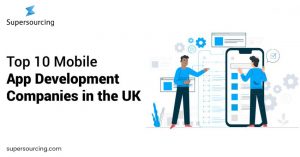Table of content
Do you find it difficult to attract and retain top talent? Do you wish to create a powerful employer branding strategy that sets your business apart from the competition? Look no further! In this ultimate guide, we will walk you through the 7 crucial steps to build an effective strategy to build your employer brand. Imagine having a workforce that is not only passionate and dedicated but also invested in the success of your company. By creating an irresistible employer brand, you can make that dream a reality.
Step 1: Understanding Employer Branding
Having a strong employer brand is essential for drawing in and keeping top talent in the cutthroat job market of today. But what exactly is employer branding? And why is it so important for your organization’s success?
The Significance of a Strong Employer Brand
A compelling employer brand serves as a powerful tool in attracting the best talent and engaging top candidates throughout the hiring process. It creates a positive brand image and resonates with your target audience – both job seekers and potential employees. A strong employer brand can also increase employee satisfaction and retention, as current team members feel proud to be associated with your organization.
The Benefits of Effective Employer Branding
By creating a compelling employer brand, you not only retain your current employees through increased job satisfaction but also build a reputable image within your industry. Let your workplace be renowned as the go-to destination for top talent, fostering a positive reputation that speaks volumes about your organization’s commitment to excellence.
Step 2: Defining Your Target Audience and Ideal Candidate
Once you’ve set your employer branding goals, defining your target audience is key. Analyze your current team, evaluating their traits for insights into successful candidates. Conduct market research to grasp industry trends and top talent preferences. Create detailed candidate personas incorporating demographics, motivations, and pain points. Ensure that your recruitment marketing showcases your brand through social media, testimonials, and accolades. Seek feedback from current and former employees for valuable insights. Tailor your employer branding strategy to resonate effectively with your identified audience, making your organization an appealing workplace.
Step 3: Crafting Your Employee Value Proposition (EVP)
Crafting a compelling Employee Value Proposition (EVP) is essential for building a robust employer brand and attracting top talent. To create an effective EVP, start by understanding your target audience, considering their demographics, motivations, and expectations. Align your EVP with their needs to effectively communicate your organization’s value. Identify unique selling points, such as core values, work environment, and growth opportunities, to set your organization apart.
Clearly showcase employee benefits, including work-life balance, competitive compensation, and comprehensive packages, to make your EVP enticing. Emphasize career development opportunities, highlighting training programs and advancement paths. Leverage the power of employee testimonials to authentically communicate your organization’s culture and overall employee experience, enhancing the appeal of your EVP to prospective candidates.
Step 4: Building a Compelling Employer Brand
Employer brand reflects your company’s values, culture, and reputation, influencing the impression potential candidates have of your organization. After defining your unique Employee Value Proposition (EVP), utilize your EVP as a foundation for building your employer brand. Effectively communicate it through various channels, emphasizing engaging content, visuals, and testimonials for a comprehensive portrayal. Consistency across platforms is vital to reinforce your image and build trust.
Foster employee engagement by encouraging advocacy, providing platforms for showcasing work, and organizing events. Leverage employee referral programs, social media sharing, and recognition to turn your employees into strong brand ambassadors, naturally attracting top talent to your company.
Step 5: Aligning Internal and External Communications
Aligning internal and external communications is pivotal for a robust employer branding strategy. It ensures a coherent and compelling message that resonates with both current employees and potential candidates. This alignment creates consistency, strengthening the overall employer brand reputation and fostering authenticity, trust, and engagement. Prospective candidates are drawn to companies with aligned messaging, signaling transparency and consistency. Cultural alignment reinforces organizational values, promoting a cohesive company culture.
Develop a comprehensive communication plan detailing key messages, channels, and target audiences. Foster open internal communication, regularly sharing updates, achievements, and company news. Empower employees through training on values, brand story, and key messages, turning them into effective brand ambassadors for a successful strategy.
Step 6: Implementing Your Effective Employer Branding Strategy
Now that your powerful employer branding strategy is crafted, the key lies in effective implementation to translate it into tangible results. Communicate the strategy extensively, involving not just HR but all team members for a collaborative effort. Leverage social media platforms like LinkedIn, Twitter, and Instagram to showcase your culture and engage with potential candidates, establishing your organization as an employer of choice. Evaluate and enhance your Employee Value Proposition (EVP) to attract and retain top talent through added perks and development programs. Optimize the hiring process with user-friendly applications, prompt communication, and employee referrals for a positive candidate experience. Monitoring and managing brand reputation online is vital to address concerns promptly. Empower employees as brand ambassadors, fostering a collective effort towards building a strong employer brand and ensuring your organization is perceived as a great place to work.
Step 7: Measuring and Optimizing Your Employer Branding
Now that your employer branding strategy is in action, it’s crucial to measure its effectiveness and optimize continuously for maximum impact. Define success metrics, including employee engagement, talent acquisition metrics, retention rates, and brand perception. Leverage analytics and technology, utilizing applicant tracking systems, employee surveys, and social media data for comprehensive insights. Measure the candidate experience from interest to application, refining processes based on feedback for a user-friendly and aligned approach. Monitor online reputation and sentiment, addressing negative reviews promptly while encouraging positive experiences to be shared by satisfied employees. Benchmark against competitors, identifying opportunities for improvement and setting benchmarks for progress. Iterate and optimize using data insights, making informed decisions and staying ahead of industry trends. Regularly review and update your employee value proposition, ensuring your employer brand remains compelling and attractive to top talent.
Conclusion
In conclusion, crafting a compelling employer branding strategy in 2024 is vital to your organization’s success. By following the 7 essential steps outlined in this guide, you can elevate your workplace allure and attract top talent. First, start by defining your employer value proposition and aligning it with your company’s mission and culture. Then, conduct thorough research to understand your target audience and their needs. Next, develop a strong employer brand messaging platform that clearly communicates your unique selling points. Once you have a solid foundation, it’s time to integrate your strategy across various channels, such as your website, social media, and recruitment campaigns. Additionally, consider leveraging employee testimonials and case studies to showcase your company’s positive workplace experiences.










